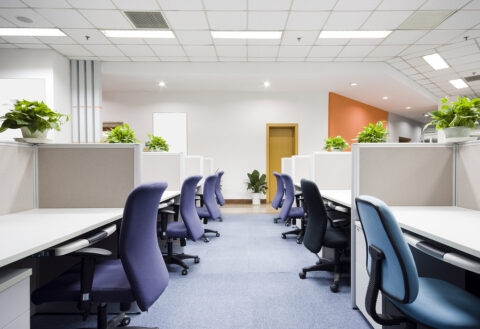In this issue: M Moser’s designs, a zero-waste office in Maine, and a timely donation
For these office clocks, time wasn’t up
It was about time.
A major technology company was reviewing their post-pandemic real estate portfolio when they noticed the clocks. Offices around the globe had them hanging on the wall — and that cost money. Not only to buy them, but to change the batteries and, twice a year, to adjust for Daylight Savings Time. This company is at the leading edge of tech, so it was pretty safe to assume that every employee had a time-telling device within arm’s reach at all times.
This company partners with Green Standards, the global sustainable decommissioning company, so they reached out to Rebecca Shirey, strategic accounts manager in the Bay Area.
“I tell our clients that if you turn their offices upside down and give them a shake, we’ll make sure everything that falls out stays out of landfill,” Shirey says. “And that definitely included clocks.”
So who needed hundreds of clocks? The Green Standards sustainable decommissioning program finds the best next user in each market, so this question was answered on a site-by-site basis. In New York City, placement coordinator Stella Baigent reached out to the Clay Avenue Tenants Association, a long-standing member of the Green Standards Charitable Network in the Bronx that redistributes donations to community members in need.
“These donations are going straight into the community,” explained Regina Carter, community associate at the registered charity. “The clocks were a huge hit with parents who are struggling to teach their children to tell time.”
As with all in-kind donations facilitated by Green Standards, the beneficiaries sent along photos of where all the surplus office assets ended up. It’s a timely example of how the circular workplace keeps equipment in use and builds communities, all while ensuring these clocks never stopped ticking.
Making the rounds: Our coalition’s work toward the zero-waste office

- How do you actually build a circular workplace from scratch? Consultant Lisa Whited helped bring together construction, design, furniture, and technology partners for an engineering company’s new headquarters in Portland, Maine, and her detailed case study is refreshingly honest about both the challenges and the opportunities of circular work.
- In a new article, the global architecture firm M Moser Associates highlights how circular design requires creative repurposing of existing materials. Their work for the Amsterdam headquarters of the tech firm Miro, pictured above, adapted many features of the 100-year-old building for a modern workplace.
- What’s the connection between office furniture and carbon emissions? This detailed overview from Coggin Sustainable Office Solutions in the UK does the math, helpfully demonstrating why reducing office waste must be part of any climate action plan.
- The year began with circular consolidation as the UK-based Chartered Institution of Wastes Management (CIWM) acquired the Circular Economy Institute, a global certification program, as well as the free-to-join Circular Economy Club.
- This Friday’s IFMA Workplace Evolutionaries webinar dives into the Materiality of Sustainability with the help of Gary Miciunas, expert in the circular built environment.
- And finally, here’s Fortune Magazine’s coverage of our first annual State of The Circular Workplace Report. In the words of reporter Paige McGlauflin, a circular workplace can help “organizations meet sustainability requirements, reduce extra office spending costs, and attract talent who increasingly expect companies to broadcast their sustainability practices.”
We’re always looking for case studies, actionable tips, and news items about the circular workplace. Reach out at hello@circularworkplace.com to join our coalition.
Signup for the Roundup
Subscribe to our newsletter and we’ll send you circular workplace updates every month



